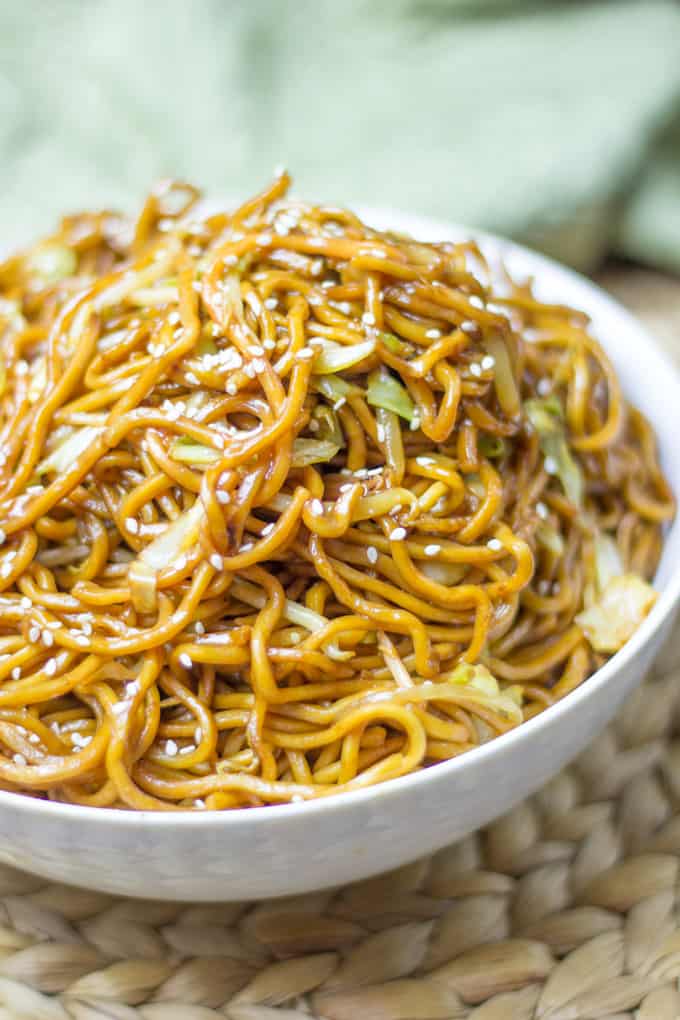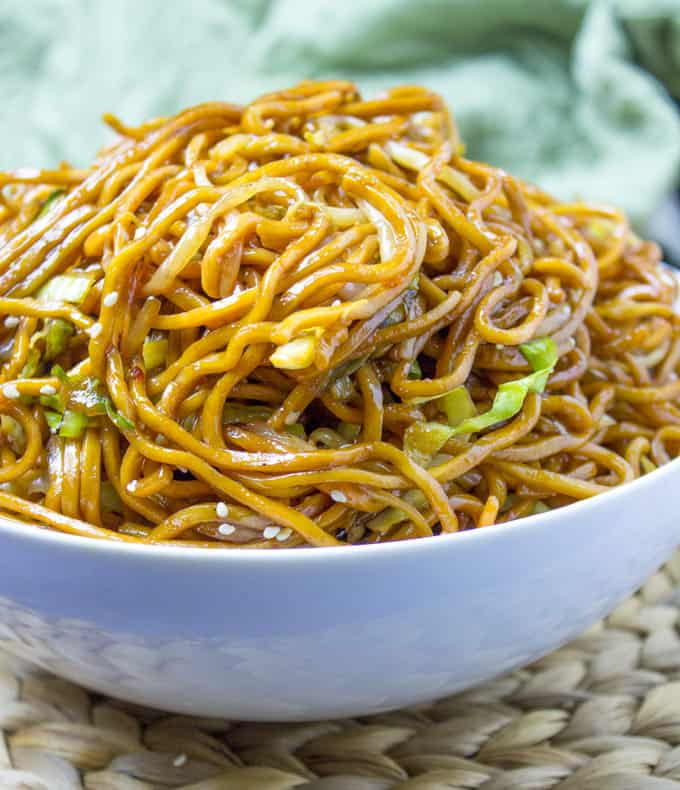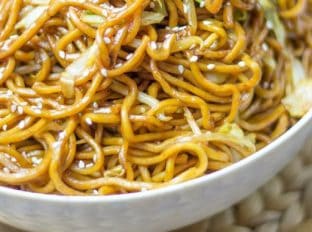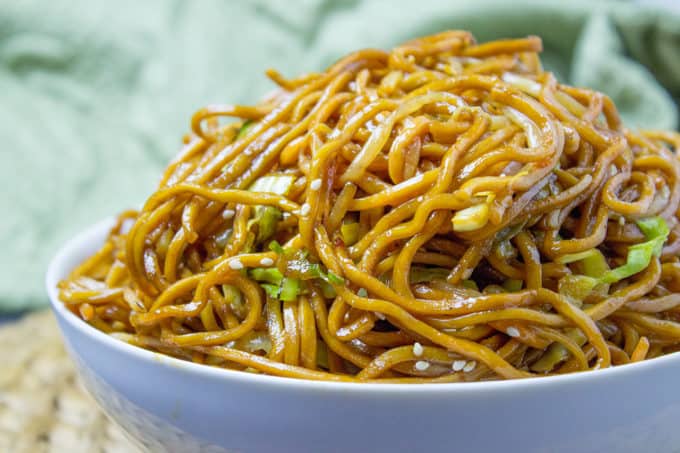CLASSIC CHINESE CHOW MEIN
CLASSIC CHINESE CHOW MEIN
CLASSIC CHINESE CHOW MEIN WITH AUTHENTIC INGREDIENTS AND EASY INGREDIENT SWAPS TO MAKE THIS A PANTRY MEAL IN A PINCH!
 Classic Chinese Chow Mein is one of those dishes that seems elusive, like there is some secret recipe that all Chinese restaurants know and no matter what we do at home it is just never the same. I won’t lie and say you can drop some spaghetti into the pot and add some regular soy sauce and make chow mein magic happen, but I can tell you with a quick trip to your local Asian grocer or Amazon.com you can make truly authentic Classic Chinese Chow Mein in less than 20 minutes.
Classic Chinese Chow Mein is one of those dishes that seems elusive, like there is some secret recipe that all Chinese restaurants know and no matter what we do at home it is just never the same. I won’t lie and say you can drop some spaghetti into the pot and add some regular soy sauce and make chow mein magic happen, but I can tell you with a quick trip to your local Asian grocer or Amazon.com you can make truly authentic Classic Chinese Chow Mein in less than 20 minutes.And you will never go back to anything less afterwards!
Some of the sauces in this Classic Chinese Chow Mein can be a bit confusing, soy sauce and dark soy sauce are definitely different things, so if you would like to learn more about it, you can look at this post from Serious Eats. If my memory serves me correct I think even my local Vons/Safeway carries all the ingredients in the recipe, but if you have a local Asian grocery store I highly suggest making a quick trip.
Also, this is after all a recipe for Classic Chinese Chow Mein, but lets talk about the ways you can customize this dish!
Add the protein of your choice! Chicken, Shrimp, Beef, Tofu, etc.
Spiralize some zucchini and carrots! Add the carrots with the celery and add the zucchini when you add the pasta.
chopped peanuts or cilantro and a squeeze of lime would add a fresh dimension
Before adding in your noodles, in a large pan add a couple of tablespoons of oil and on a high heat add the noodles until crispy on both sides for a quick pan fried noodle option!
Add some heat! Sriracha, chili garlic paste or crushed red pepper would kick up this dish in a hurry


CLASSIC CHINESE CHOW MEIN
Yield: 4 servings
Prep Time: 10 minutes
Cook Time: 10 minutes
Total Time: 20 minutes
Course: Main Dish
Cuisine: Chinese
Classic Chinese Chow Mein with authentic ingredients and easy ingredient swaps to make this a pantry meal in a pinch!
INGREDIENTS
- 2 tablespoons canola oil
- 1/4 head cabbage thinly sliced
- 2 cloves garlic , crushed and minced
- 2 tablespoons sweet soy sauce (aka Kecap Manis)* see note for homemade substitute
- 2 tablespoons soy sauce
- 4 tablespoons oyster sauce
- 1 cup water
- 12 ounces chow mein noodles , cooked a minute shy of the directions*
- 6 ounces bean sprouts (optional)
- sesame seeds for garnish (optional)
INSTRUCTIONS
- Note: click on times in the instructions to start a kitchen timer while cooking.
- Heat a large pan or wok on high heat.
- Add two tablespoons of canola oil to the pan and cook the cabbage.
- Cook 2-3 minutes until wilted, add the garlic and cook for an additional 30 seconds.
- Add the soy sauce, sweet soy sauce, oyster sauce and water and bring to a boil for 1 minute.
- Add in the pasta and bean sprouts and toss to coat.
- Serve immediately
RECIPE NOTES
To make homemade Kecap Manis, add 1 1/2 teaspoons of soy sauce and 1 1/2 teaspoons of molasses or dark brown sugar with a tiny pinch of ground anise. This is a decent substitute, but if you can get the original the flavor will be even deeper.
If you can't find chow mein noodles you can substitute yakisoba noodles and just toss the packet and use the noodles only.
NUTRITION INFORMATION
Yield: 4 servings, Amount per serving: calories
All images and text © for Dinner, then Dessert, Inc.SAVE RECIPE

more recipes @ https://dinnerthendessert.com
BERITA LENGKAP DI HALAMAN BERIKUTNYA
Halaman Berikutnya
0 Response to "CLASSIC CHINESE CHOW MEIN"
Post a Comment